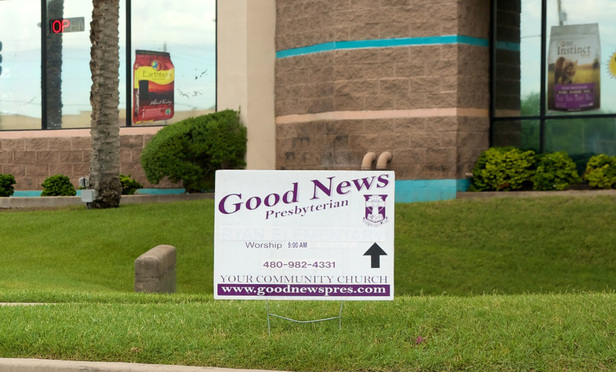For years, many of the lawyers who litigate over government regulation of signs would tell you that almost all sign ordinances are at least a little bit unconstitutional, imposing rules that would not fly for other forms of speech.
If there was ever any doubt about that axiom, the U.S. Supreme Court’s June 18 ruling in Reed v. Town of Gilbert makes it truer than ever, holding localities to a “strict scrutiny” First Amendment standard that makes it difficult for governments to treat certain kinds of signs better or worse than others.
This content has been archived. It is available through our partners, LexisNexis® and Bloomberg Law.
To view this content, please continue to their sites.
Not a Lexis Subscriber?
Subscribe Now
Not a Bloomberg Law Subscriber?
Subscribe Now
LexisNexis® and Bloomberg Law are third party online distributors of the broad collection of current and archived versions of ALM's legal news publications. LexisNexis® and Bloomberg Law customers are able to access and use ALM's content, including content from the National Law Journal, The American Lawyer, Legaltech News, The New York Law Journal, and Corporate Counsel, as well as other sources of legal information.
For questions call 1-877-256-2472 or contact us at [email protected]



